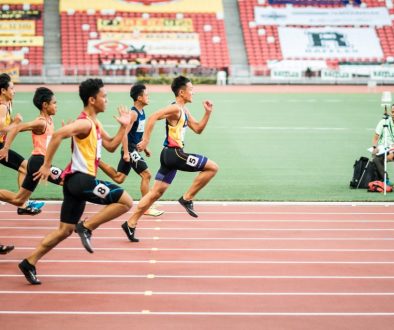“It’s like deja vu all over again!” — Yogi Berra
Why Revisit the Pops?
The purpose of this section of the conclusion is to restate the POPs or subtheses from the introduction in a manner that reminds the reader of what was discussed in the body paragraphs during the course of the essay. These “revisits”, in conjunction with the other elements of the conclusion, should also give your audience the sense that the paper has come full-circle.
The revisited POPs will be mentioned in the same order they were listed in the introduction and in the same order they were detailed in the essay’s body paragraphs. The primary difference between the original POPs and the POPs revisited is in their tone and point of view. The original POPs from the original introduction essentially announce, “This essay is going to demonstrate or prove something.” Whereas, the POPs revisited state, “This paper has shown or proven something to you.”
Please also note that you want to avoid simply repeating your POPs word-for-word as they appeared in your introduction. To the reader, this would seem somewhat stilted and maybe even indicate that you, the writer, were being lazy.
Look at the following example from the introduction of a persuasive essay. The three POPs are numbered here so that you can easily see them in sequence. These numbers would not appear in an actual essay.
(1) This paper will show that despite popular conceptions, pit bulls are statistically less likely to attack humans than other dogs. (2) Additionally, it will show that pit bulls are demonstrably more likely to protect people than to harm them. (3) Finally, evidence of this breed’s intelligence and trainability will be presented.
Now, observe how those same POPs are repeated in the conclusion, but in a slightly different way.
(1) As has been made clear, the idea that that people are more likely to be attacked by pitbulls has been thoroughly and scientifically refuted. (2) In fact, when it comes to protection and home security, one could do no better than have a few of these dogs around. (3) And when it comes to intelligence and trainability, once again it has been shown the pitbull is a superior breed.
As you can see, the focus in both examples is essentially the same; they are the same POPs written in the same order. The difference is in the tone and point of view. The revisited POPs are written in a slightly more self-assured manner because the writer has presented convincing arguments in the body paragraphs. Phrases like, “As you have learned” and “Once again it has been shown” help to create this finished and confident tone.
POPs Revisited Models
The following POPs revisited models will be shown in relation to the original POPs from the introduction. For context, the original POPs will be shown transitioning from the thesis statement and into the introduction closer. Likewise, the POPs revisited will be shown transitioning from the thesis statement revisited and into the reflection.
Model 1
Type of essay: response to literature
The prompt: In a text-evidence-based, multiple-paragraph essay, give your reaction to Denise Levertov’s short poem, “Moon Tiger”.
First the original POP from the introduction
… In the short poem, “Moon Tiger”, Denise Levertov explores this theme of the fantastic, and sometimes even delusional nature of childhood imagination. In the nighttime world she creates, the moonlight that enters a child’s bedroom is transformed into a prowling tiger in a manner that only a child’s imagination can do. Through skillful verse, Levertov conveys the acute creativity of youthful fancy.
Now the POPs Revisited from the conclusion
…As we’ve seen, Denise Levertov portrays this phenomenon expertly in “Moon Tiger”. By transforming simple moonlight passing through blinds into a nocturnal predator, the poet skillfully allows us to journey into the mind of a child. And such journeys are often necessary, especially perhaps as we…
Notes
Since this was a very short response only one POP was introduced in the introduction and only one POP is revisited here. In combination with the thesis statement revisited, this revisited POP assists in making the paper feel as if it has gone full-circle.
Model 2
Type of essay: Expository/Argumentative
The prompt: Pitbulls are commonly considered to be unpredictable and even vicious animals. They are frequently portrayed in the media as enough of a societal threat that they should be subject to stringent leashing requirements and prohibited from public spaces such as playgrounds and dog parks. Do you believe that pitbulls should be singled out and restricted because of their vicious natures?
First the original POPs from the introduction
… they are in fact a friendly and loyal breed, and any attempt to treat them as especially dangerous would be irrational and unfair. This paper will show that despite popular conceptions, pitbulls are statistically not more prone to bite or attack humans than other dogs. Additionally, it will be shown that pit bulls are demonstrably more likely to protect people than harm them. Finally, we will see that pitbulls are more intelligent and trainable than many other canine breeds. As Camryn Rogers rightly contends, pitbulls really are a misunderstood and falsely maligned breed.
Now the POPs Revisited from the conclusion
… American Bull Terriers are not vicious animals; they are a loyal and friendly breed of dog. We learned that these dogs are statistically not more prone to bite or attack humans. We saw evidence that the breed is one of the most loyal and protective of their owners. We also learned that pitbulls are one of the most intelligent and trainable dogs there are. Perhaps the time has come for us to stop being so quick to judge. Perhaps we…
Notes
Three POPs are revisited here, beginning with the phrases, “we learned, we say, and we also learned”. The writer is reviewing what she has accomplished in her writing. In combination with the thesis statement revisited, this revisited POP assists in making the paper feel as if it has gone full-circle.
Model 3
Type of essay: Expository/Argumentative
The prompt: People have a natural, almost primal fear of rattlesnakes. Often the first reaction to seeing a rattler in a residential area is panic and fear. In areas such as suburban Southern California, is it possible for rattlesnakes and humans to coexist with one another?
First the original POPs from the introduction
…You might even call the relationship downright amicable. This paper will focus on examples of people coexisting peacefully with deadly snakes. It will also focus on ways in which rattlesnakes are actually beneficial to suburban environments. It will go on to explore the activities local snake preservation societies that exist for the sole purpose of protecting these snakes from those who might do them harm. Finally, this paper will transition to a discussion of ways that people living in rattlesnake country can keep themselves and their families safe from these deadly, but necessary, creatures. Soon you will see that rattlesnake and human co-existence is quite possible.
Now the POPs Revisited from the conclusion
…The fact is, humans and rattlesnakes can and should live in proximity to each other. As we’ve learned, rattlers are beneficial to our environment and help keep our ecosystem in balance. And those advocating for the extermination of rattlesnakes should take a cue from the more evolved preservation societies that understand the snake’s value and seek to protect it. If folks just take a few simple precautions, they can easily enjoy the uniqueness of these snakes while simultaneously staying out of harm’s way. There is room in this world for all species, whether they be human or grizzly bear, or gorilla or venomous snake. It seems that sometimes…
Notes
Three POPs revisited here, beginning with the phrase, “as we’ve learned”. As always, the POPs should be repeated in the same order they were originally set up in the introduction, but the wording should be different. The writer is reviewing what she has accomplished in her writing. In combination with the thesis statement revisited, this revisited POP assists in making the paper feel as if it has gone full-circle.
Model 4
Type of essay: response to literature
The prompt: In a multiple-paragraph essay discuss a recurring theme that is addressed in Smokey Robinson’s two songs, “The Tracks of My Tears” and “The Tears of a Clown”.
First the original POPs from the introduction
… These songs, both lyrically and musically, explore the feelings men who wear masks of happiness to hide deep heartache caused by being rejected by the ones they love. This paper will focus not only on how these songs show the way lovelorn men often hide their emotions, but delve into the symbols, allusions, and figurative language each tune implements to help drive this theme home. Who knew that love could hurt in so many literary ways?
Now the POPs Revisited from the conclusion
… An analysis of both sad cases has revealed that the men in question each wear masks of happiness that belie their repressed melancholy. Robinson deftly employs the literary strategies of symbolism, allusion, and figurative language to reveal men who would rather hide the truth than reveal their true pain. Perhaps the great popularity of these two songs is telling. Perhaps it is not so uncommon that…
Notes
The POPs from the introduction are again revisited here. As always, the POPs should be repeated in the same order they were originally set up in the introduction, but the wording should be different. In combination with the thesis statement revisited, this revisited POP assists in making the paper feel as if it has gone full-circle.
Model 5
Type of essay: persuasive/argumentative
The prompt: Our principal announced recently that, based on a recommendation from our school’s booster club, she would likely be setting aside most of our $500,000 in State bond funds for the purchase of football stadium lights. Advocates of his plan are excited by the prospect of finally being able to enjoy some Friday night games; they believe stadium lights will create a sense of school tradition and spirit. Opponents contend that diverting these funds would hurt the school’s academic programs and that this money would be more wisely spent on purchasing new textbooks, hiring more teachers, or creating a computer lab. In multiple-paragraph, evidence-based essay, argue why the available funds be used to purchase football stadium lights, as our principal and boosters wish, or whether they should be set aside for our academic program.
First the original POPs from the introduction
…A much better long-term investment would be to use these funds to improve our school’s academic programs. There are several ways we could do this. Our first priority should be to use some of the funds to hire more teachers. Class sizes at ERHS are unreasonably large and a few extra teachers would help with this. We should also consider putting some of this funding aside for computer carts. We lag far behind other schools when it comes to the technology we offer our students and this needs to be addressed. Finally, and to be fair to our sports teams, some of the funding should also be dedicated to improving our athletic program. When given careful consideration, it seems wisest to focus any incoming resources primarily on our academics, as that is the reason the school is here.
Now the POPs Revisited from the conclusion
…it seems clear that we need to have the sobriety of mind to step back from the allure of nighttime games and embrace what Whitney High School really needs — an improved academic program. It’s been established that our shortage of quality teachers is increasing class sizes and inhibiting our ability to fund all of the AP courses we would like to offer our students. As we’ve also seen, additional computer carts would help lift us out of the technology deficit we are currently in. And, yes, we could dedicate some of the funds to our athletics program. We may not be able to purchase stadium lights, but we could, as we’ve discussed, upgrade the uniforms for most, if not all of our teams. At the risk of sounding like a bummer, I’d like to remind the stakeholders of Whitney High of…
Notes
The POPs from the introduction are again revisited here. As always, the POPs should be repeated in the same order they were originally set up in the introduction, but the wording should be different. In combination with the thesis statement revisited, this revisited POP assists in making the paper feel as if it has gone full-circle.




